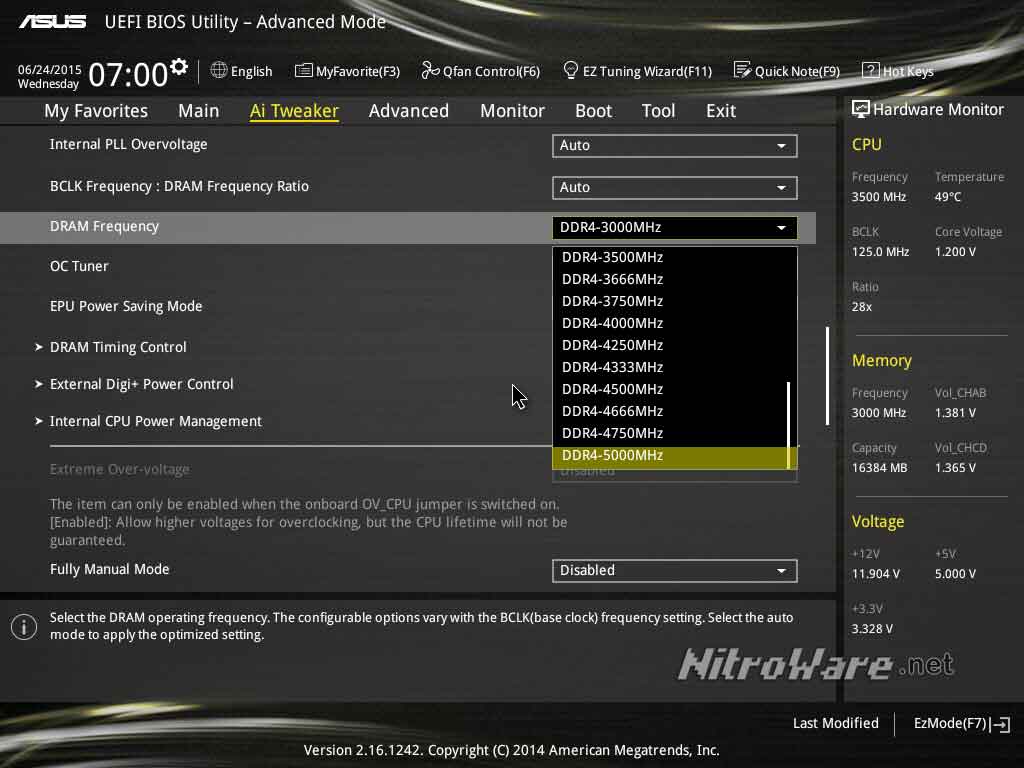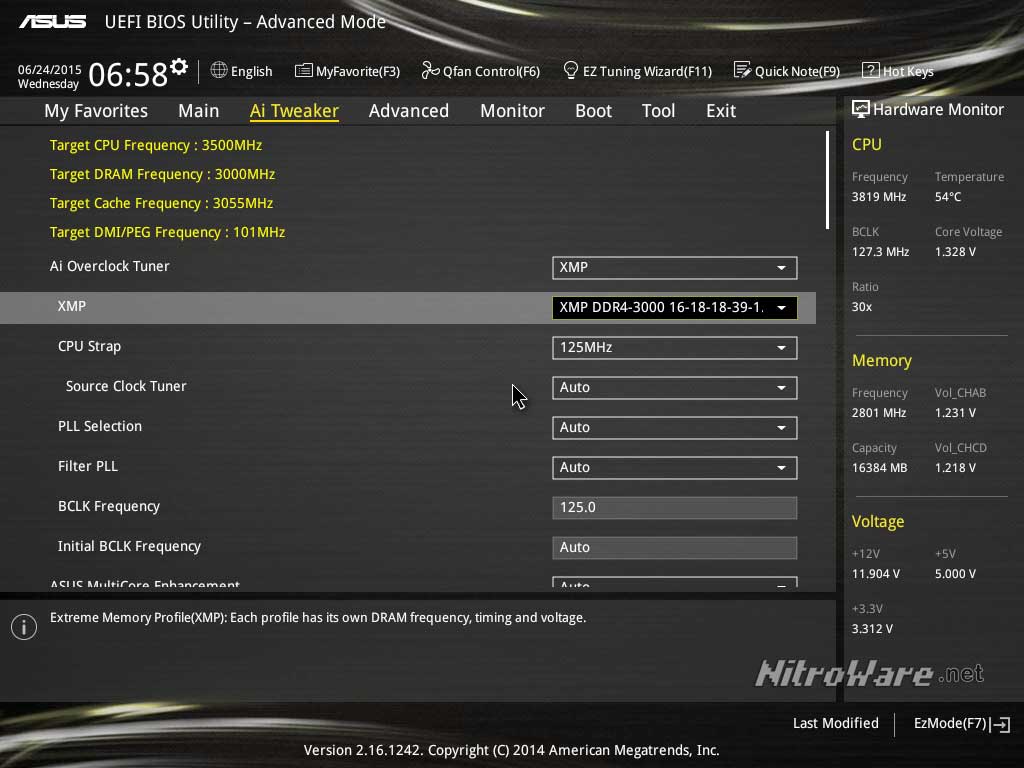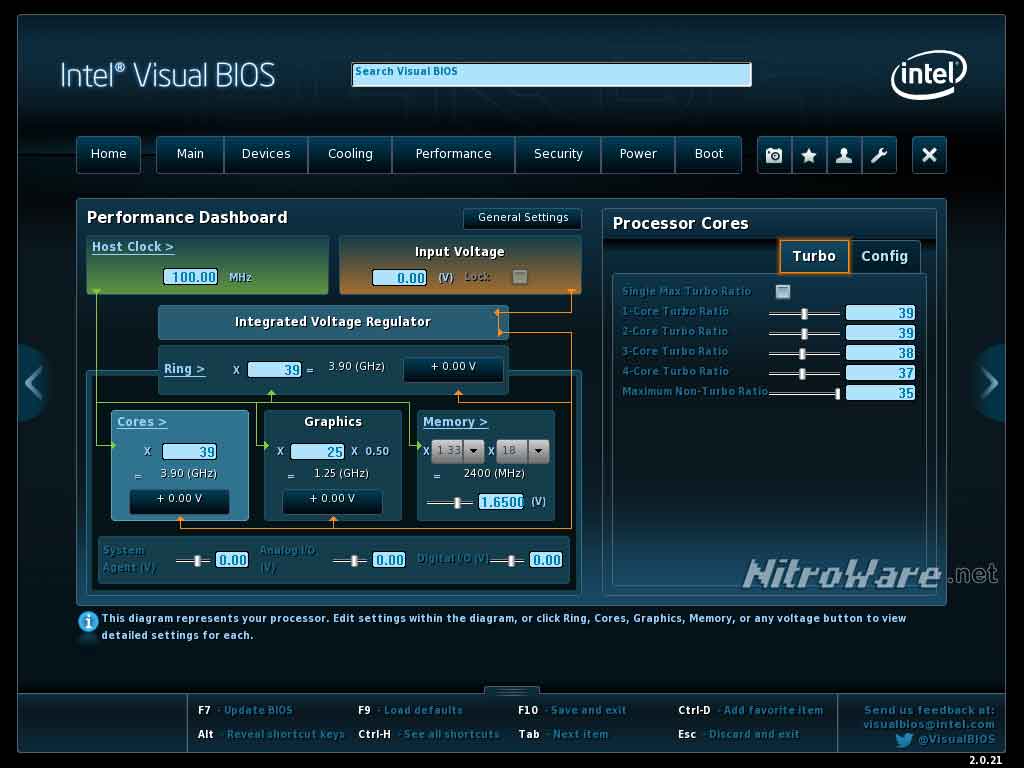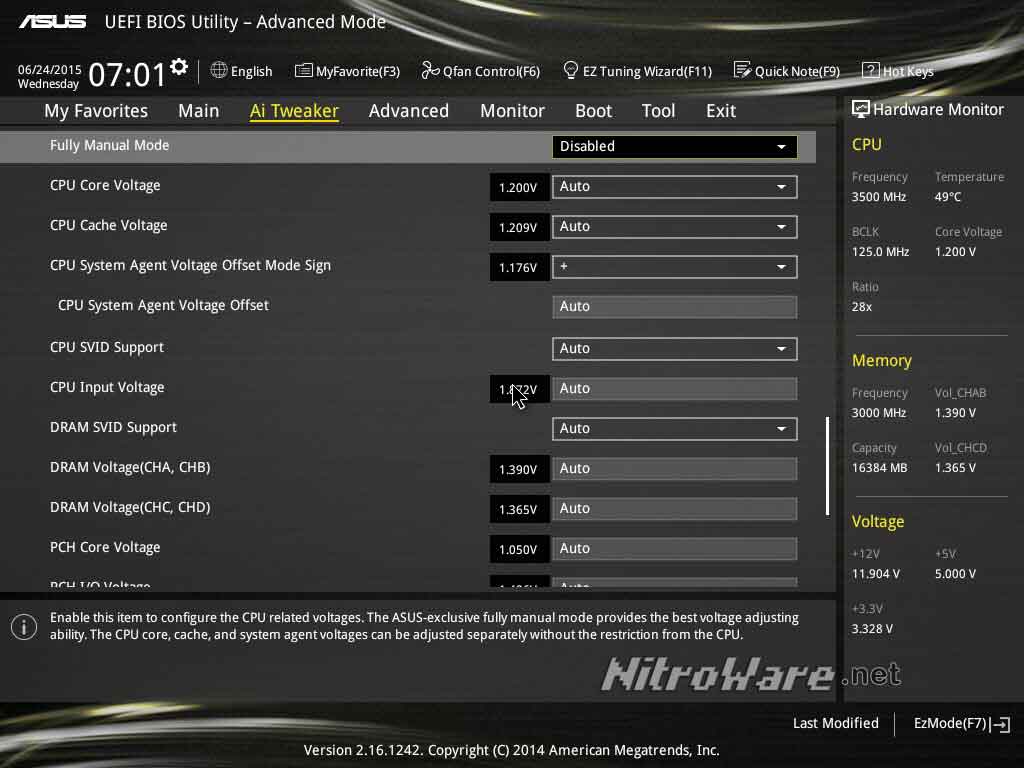DDR4-2400 support
This is not that important in the grand scheme of things unless one intends to put these processors into an OEM machine or board that does not support high memory speeds. All third party X99 motherboards from name brand manufacturers do support high-speed memory and DDR4-2400 already worked fine on Haswell-E, let alone speeds up to and past DDR4-3000.
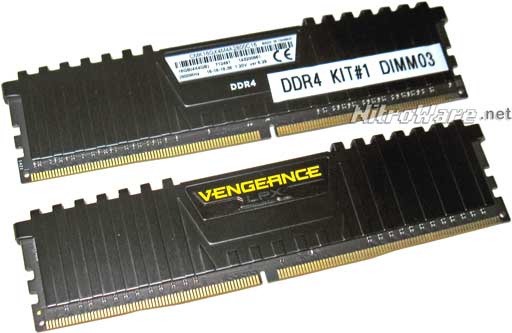 DDR4-2400 is widely regarded as the ‘new’ minimum speed versus what we had in 2014 being DDR4-2133.
DDR4-2400 is widely regarded as the ‘new’ minimum speed versus what we had in 2014 being DDR4-2133.
A caveat with Haswell-E and X99 was that different speeds of memory required the base clock to be increased so that the right memory speed such as 2800 or 3000 could be setup. Increasing the base clock also increases the clock speed slightly, and this is technically an overclocked state which is not officially supported by anyone involved.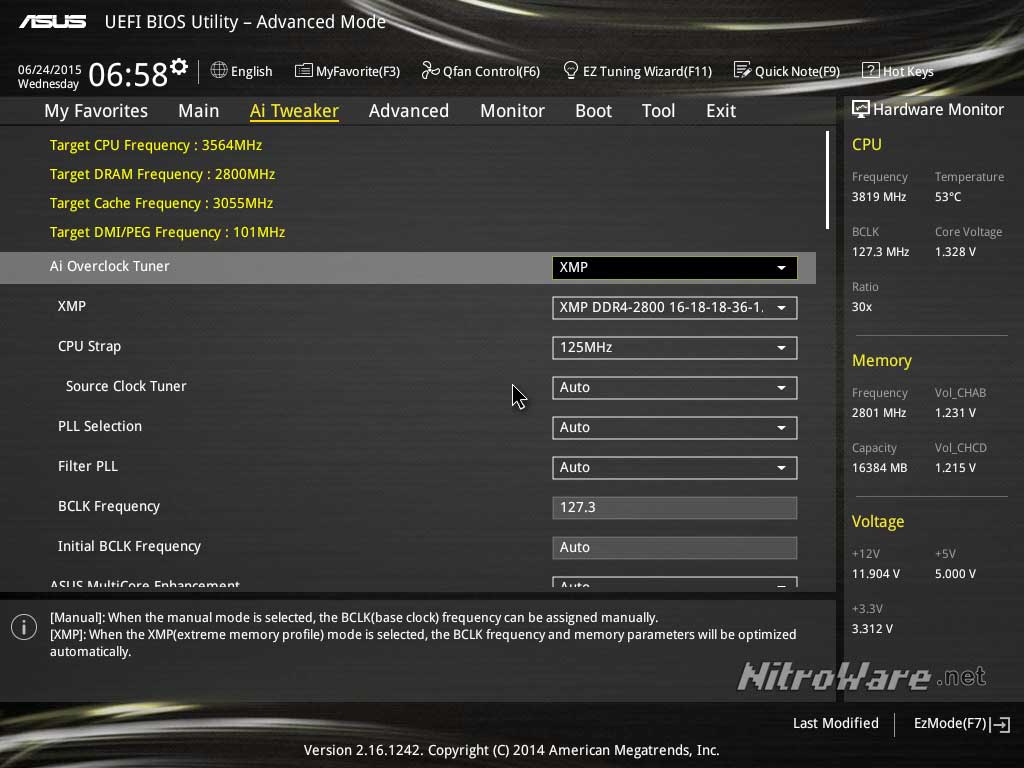
We reached out to Intel who told us that Broadwell-E was no different and still incorporated the same memory straps/bus dividers. Given Intel changed the memory support, we will have to confirm this for ourselves. Skylake in its quad-core format paired with Z170 does not have this restriction.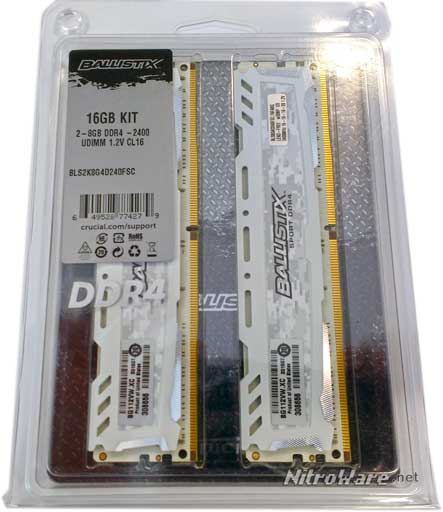
Per-Core Overclocking
According to Intel’s Platform Marketing Manager for Extreme Edition,Haswell-E had ganged multipliers, meaning one adjustment affected all the cores, yet now Broadwell-E has per-core overclocking.
This did not make sense, and checking the X99 boards we had access to as well as Intel’s own Z87 board right there plain as day are per-core ratio settings for the user to fine tune their settings.
All I have to say is WTF? I was not mistaken, we have a slide plus a conference call where this information was relayed.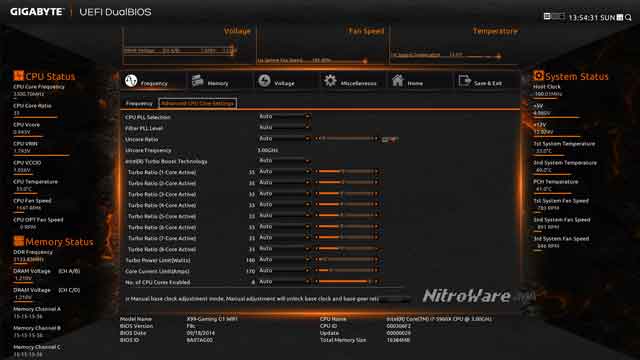
Looking further, the ability for the BIOS to adjust these settings adjustments are one thing but the actual turbo multiplier on the CPU is another thing, and that is what Intel was likely referring to. No clarification was provided and we had to find out for ourselves.
It turns out that on the higher core i7s, the ratios are largely the same/grouped as shown in our screenshots above and Broadwell-E is supposed to fix that.
Note in the below table how that if regardless if cores 3 to 8 are in use, the speed is 33x multiplier (33x 100 bus speed) or 3.3GHz, whereas on the other listed processors we have 3-speed tiers for the Ivy Bridge based Xeon and Haswell based i7. The setup on the 5960X is not the most efficient.
| Processor Model | Base Frequency (GHz) | Number of Active Cores Max Turbo Boost Frequency (GHz) | |||||||
|---|---|---|---|---|---|---|---|---|---|
| 1 | 2 |
3 | 4 | 5 |
6 | 7 | 8 | ||
| Core-i7 5960X | 3.0 | 3.5 | 3.5 | 3.3 | 3.3 | 3.3 | 3.3 | 3.3 | 3.3 |
| Xeon E5-2643v2 | 3.5 | 3.8 | 3.7 | 3.6 | 3.6 | 3.6 | 3.6 | ||
| Core i7-4770K | 3.5 | 3.9 | 3.9 | 3.8 | 3.7 | ||||
AVX Ratio Offset
Haswell-EP (Dual Socket capable Xeon E5v3) introduced double wide AVX-512 instructions. Because AVX is computationally intensive for the CPU, on that processor they reduce the clock speed only when software heavily utilising those instructions is run. By backing off on the speed, it reduces the max temperature and gives the processor headroom, preventing the CPU from reaching its thermal limiter and going into throttle mode, which will more severely affect performance.
An analogy is a car engine at high RPMs if it works constantly at the redline it can overheat or be damaged. Hence the role of the gearbox in the drive train.
Broadwell-E brings across the AVX Ratio offset feature from Haswell-EP to enable this functionality, however, does not introduce AVX-512 support. Haswell-E had neither of these features.
This feature is more something appealing to the enthusiasts and overclockers who understand how their CPU and software works in certain scenarios, however those who do very heavy content creation such as video transcoding, this feature will help by doing its work behind the scenes and ensuring that the processor does not end up throttling during these types of workloads, especially if there is an overclock applied which of course increases heat.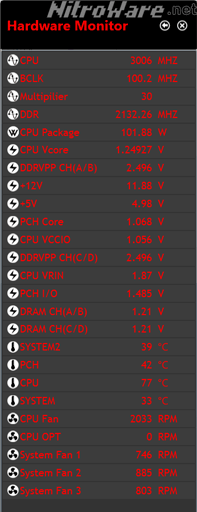
VccU Voltage Control
Like Haswell but unlike Skylake, Broadwell utilises an integrated voltage regulator to control and divide all of the particular voltage rails the processor needs to operate its various logic and function blocks. This technology is carried over from Haswell but was not used for Skylake
With a feature packed brand name X99 board, a full slew of knobs and dials are available to tweak the various voltages and performance of the CPU’s integrated voltage regulator.
Again like with the ‘per core overclocking’ options another WTF moment for us.
Again, during the conference call to brief us on these new processors, Intel talked about how the new VccU control ‘knob’ would allow the ring bus voltage to be increased and would be very beneficial to extreme overclockers using liquid nitrogen (Vcc is engineering notation for Voltage).
There are a few technical terms to clarify before continuing.
- System Agent – Also called the Uncore. Contains logic that is not related to the CPU Cores such as PCI Expres bus and Chipset Bus, Memory Controller and Graphics
- Ring Bus – An interconnect within the processor between the Cores, Cache, System Agent and Integrated Graphics (If Applicable)
Intel claims they added a new adjustment to allow the RING voltage to be increased.
Well, guess what, we checked a number of boards, both X99 for the Extreme Edition process and Z87 for mainstream processors and some already had this knob implemented.
Gigabyte clearly labels their knob as ring voltage, plus System Agent voltage, but no Cache voltage on the Gigabyte X99-Gaming G1 board.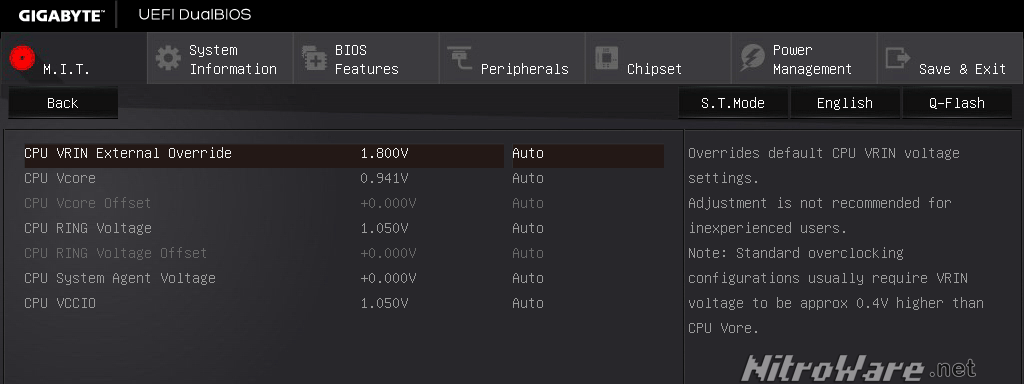
ASUS has more knobs, Cache, System Agent but no Ring Voltage on the X99-A/USB 3.1 board
Intel has System Agent and Ring Voltage on their DZ87 board, visible in our earlier screenshot
Different manufacturers use alternate names for different adjustments hence, the labels do not align between brands but we call a spade a spade, nothing engineering about it. If a vendor says something is new, yet it appears not to be at first glance then something is up.
Turbo Boost Max Technology 3.0
The most signficant feature with Broadwell-E we think is Turbo Boost Max Technology (TBMT), which deserves its own section, following.
